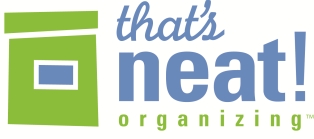Holiday Tips….2010??
/Great post by guest blogger, Janna Lufkin.
Yep, I’m already thinking about next year and nope, I didn’t roll out of bed at 4am December 26th to get to the post holiday sales by 5am. I can’t think of anything I’d rather not do! I think about December 2010 now, because I refuse to buy into the holiday hype and self-induced stresses many of us experience come the day after Thanksgiving.
But those old habits die hard. Often after the holiday hubbub is over, all we really want to do is ditch the tree, toss the lights in a box, stash the ornaments and slam the lid closed.
However, if you take a little time to organize your holiday collections, think about what you really need (should you have a burning desire to shop) and carefully put things away, come December 2010, you’ll have more time to enjoy the season and most importantly, each other.
Here are a few ideas to get you started…
• Ornaments: They add up don’t they? Many of them have special emotional meaning. But just as many come through ornament exchange parties, tied to the tops of treat plates, etc. My advice: hang onto the ones you and your family have special memories attached to; give away or donate the rest. When storing ornaments, wrap each in tissue (I’ve re-used the same tissue for years) and carefully pack them in a sturdy flip top box. Tip: If you have kids, wrap their special treasures in tissue and store inside their stockings. That way, next year when the kids are dying to decorate and help, you can hand them their stocking and keep them busy while you get the tree in the door.
• Lights: Roll each strand up like a ball of yarn starting with the female plug end and store in a sturdy flip top box. You’ll find that putting lights on your tree will be a lot easier by passing a ball of lights around the branches instead of a messy, tangled strand.
• Gift Wraps, Ribbons and Trims: I know, I know, there are some amazing deals out there. 50% – 75% off or more. Resist the urge. Instead, purge! Sort and store the wraps, cards and trims you have with your holiday decorations. Come 2010 if you need more paper, buy simple brown kraft paper and/or white butchers paper. It never goes out of style, can be used throughout the year, and it’s recyclable. With bits and pieces of the patterned wraps and ribbons you already have, plus a bit of creativity, you can have very simple yet stylish gifts under your tree.
• Gifts for next year: While it’s always a good idea to be on the lookout for special, meaningful holiday gifts, I’ve found shopping the sales right after the holidays may not yield that perfect gift. Often, by the time next year rolls around, tastes and interests shift and change and a good portion of the gifts I had purchased (because they were a good deal) are often not as relevant as they might have once been. Keep in mind that just because it was a good deal, doesn’t mean it’s the ideal gift.
That said, after-Christmas sales are a good time to pick up a few hostess gifts and small items to keep on hand for kids parties, etc. I store mine in a designated “gift drawer”. Whenever I need a quick something, I usually have it on hand.
December 2010 will sneak up fast. If you get organized now you’ll enjoy the season not stress about it.
-Janna


















